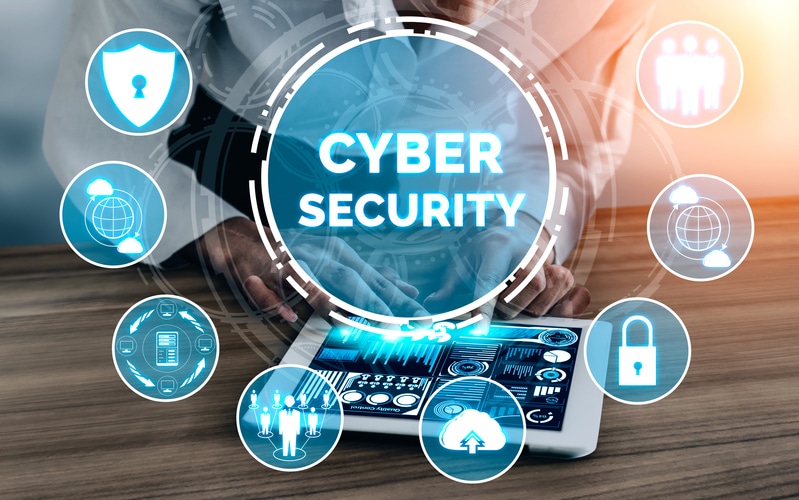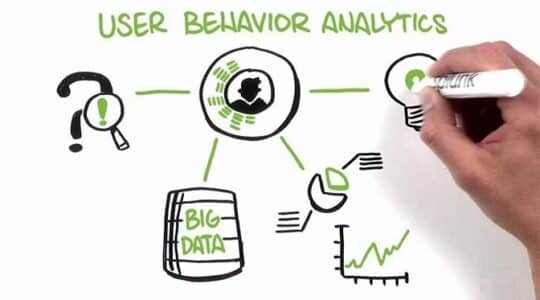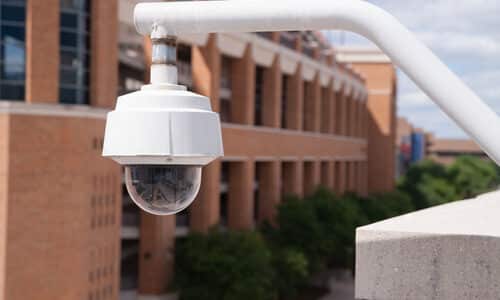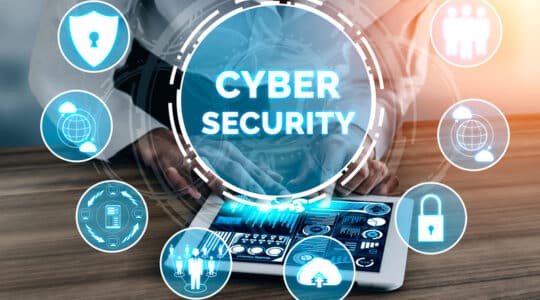
The Convergence of Physical and Cybersecurity: A Unified Approach
The Convergence of Physical and Cybersecurity: A Unified Approach
In an increasingly connected world, the lines between physical security and cybersecurity are becoming more blurred. The integration of physical security systems with digital networks has created a landscape where breaches in one domain can lead to vulnerabilities in the other. As organizations expand their use of Internet of Things (IoT) devices, smart infrastructure, and cloud-based solutions, the need for a unified security approach has never been more critical. This article explores the growing trend of security convergence, highlighting real-world case studies, the role of artificial intelligence (AI) in unifying security measures, and the challenges businesses face in adopting integrated security strategies.
Understanding the Convergence of Physical and Cybersecurity
Traditionally, physical security focused on the protection of assets such as buildings, equipment, and personnel using surveillance systems, locks, and physical barriers. On the other hand, cybersecurity protected digital assets like data and networks from cyberattacks. However, as technology continues to evolve, the boundaries between these two realms are increasingly overlapping.
For instance:
• Smart Access Control: Systems like keycards and biometric scanners that rely on digital platforms can be compromised by hackers.
• IoT Devices: Smart cameras and sensors, although valuable for surveillance, can be used as entry points for cybercriminals.
• Critical Infrastructure: The integration of operational technology (OT) with information technology (IT) has increased vulnerabilities, especially in industries like energy, healthcare, and transportation.
The convergence of physical and cybersecurity offers numerous benefits but also introduces new complexities, especially in how these domains are managed and integrated.
Key Drivers of Convergence
Several factors are driving the integration of physical and cybersecurity, including:
1.Growth of IoT and Smart Devices
The global IoT market is expected to surpass $1.1 trillion by 2025, with billions of devices interconnected globally. These devices, such as security cameras and sensors, often have dual purposes, like monitoring physical premises while transmitting data over the internet. A breach in cybersecurity can lead to a failure in physical security measures and vice versa.
2.Hybrid Attacks
Cybercriminals are increasingly using hybrid methods that target both physical and digital assets. For example, a hacker might exploit vulnerabilities in a building’s physical access control system, gaining entry and causing disruptions to critical IT infrastructure.
3.Regulatory Requirements
Governments are implementing stricter regulations to protect businesses and consumers. For example, regulations like the General Data Protection Regulation (GDPR) in Europe and Canada’s PIPEDA mandate organizations to integrate security practices that address both physical and digital threats.
4.Cost-Effective Security
Integrating security operations helps organizations reduce redundancies and streamline their security efforts. According to a Deloitte report, companies that adopt integrated security frameworks see 30% faster incident responses, ultimately improving operational efficiency.
Benefits of a Unified Security Approach
1.Comprehensive Threat Management
A unified security system provides a holistic approach to identifying and mitigating threats. By addressing physical and digital vulnerabilities together, organizations can minimize security gaps that may otherwise go unnoticed.
2.Real-Time Monitoring
Integrated security systems enable continuous monitoring of both physical and digital environments, allowing businesses to detect and respond to threats in real-time. For example, an unauthorized physical access attempt can trigger cybersecurity protocols to secure sensitive data.
3.Improved Incident Response
Having a single security system that addresses both physical and cyber threats leads to faster and more coordinated incident response. This integration minimizes confusion during a security breach, ensuring a unified strategy for containment and recovery.
4.Enhanced Business Continuity
With an integrated security approach, businesses are more resilient to a variety of attacks, helping them avoid significant operational disruptions. A unified system ensures that both physical and cyber assets are protected from evolving threats.
Case Studies on the Need for Convergence
1.The Marriott Data Breach (2018)
The Marriott data breach, discovered in 2018, compromised the personal information of approximately 500 million guests. Hackers gained access to the reservation system through a third-party vulnerability. A deeper investigation revealed that inadequate access controls and a lack of integration between physical and cybersecurity teams played a significant role.
Physical Security Gap: Employees with unnecessary access to critical systems inadvertently became enablers of the breach. Marriott’s failure to implement rigorous identity verification and access monitoring allowed malicious actors to infiltrate undetected.
Cybersecurity Gap: The breach exploited the reservation system’s lack of encryption and monitoring, which should have triggered alarms during unauthorized activity.
Lesson: Companies must ensure that physical access controls—such as biometric authentication for server rooms—are integrated with cyber incident detection systems.
2.Target POS System Breach (2013)
In 2013, Target suffered a cyberattack where hackers stole the credit and debit card information of 40 million customers. The breach was initiated through an HVAC vendor’s network credentials, which were connected to both physical and IT systems.
Physical Connection: The HVAC system, used to manage in-store environments, was tied to Target’s broader network without adequate segmentation.
Cyber Consequence: Once inside, attackers moved laterally to infiltrate the POS systems.
Lesson: IoT devices, such as HVAC systems, need strict network segmentation to prevent them from being exploited as entry points. Physical and cybersecurity teams must coordinate to assess risks posed by interconnected devices.
3.Canadian Energy Sector
According to the Canadian Centre for Cyber Security (CCCS), the country’s energy sector faces significant risks from cyber-physical attacks. In one documented incident, attackers targeted an energy company’s control systems, gaining access through compromised IoT sensors.
Physical Vulnerability: IoT devices monitoring equipment in remote locations were inadequately secured, enabling unauthorized physical access.
Cyber Vulnerability: The breach extended to the company’s central IT system, threatening operations across multiple facilities.
Lesson: Critical infrastructure operators must adopt integrated security measures that monitor both physical access points and network activity in real-time.
The Role of AI in Unified Security
AI is transforming the way organizations approach the convergence of physical and cybersecurity. Here are some key ways AI is driving innovation:
1. Enhanced Surveillance and Anomaly Detection
AI-powered video analytics can detect suspicious activities in real-time, such as unauthorized access or unusual behavior, while also monitoring network traffic for cyber anomalies like unauthorized data transfers. This integration allows for faster identification of threats across both physical and digital environments.
2. Facial Recognition and Biometric Accuracy
AI can significantly enhance the accuracy of biometric systems, minimizing errors like false positives or spoofing attempts. AI-driven facial recognition systems can even adapt to different lighting conditions, ensuring robust security in any environment.
3. Predictive Threat Analysis
Machine learning algorithms can analyze historical data and identify emerging threats, allowing organizations to take a proactive approach. For example, AI can flag potential cyber-physical attacks by recognizing patterns in failed access attempts or unusual system activities.
4. Automated Incident Responses
AI can trigger automatic responses during an incident. If an unauthorized physical access attempt is detected, AI systems can lock doors, isolate network segments, and alert security personnel, all while minimizing human intervention.
Challenges in Convergence
While the integration of physical and cybersecurity systems offers numerous advantages, organizations face several challenges in adopting a unified approach:
1. Complexity of Integration
Many organizations rely on legacy systems that were not designed for integration with modern IT infrastructure. The challenge lies in upgrading these systems while maintaining seamless functionality. Moreover, compatibility issues between systems from different vendors can create significant integration hurdles.
2. Data Privacy and Compliance Concerns
Unified security systems collect vast amounts of data, including personal identifiers like biometric information and surveillance footage. This data must be stored and processed in compliance with strict privacy regulations, such as PIPEDA in Canada. Failure to manage this data appropriately can lead to legal and financial repercussions.
3. High Costs of Implementation
The cost of integrating physical and cybersecurity systems can be a significant barrier for small and medium-sized enterprises (SMEs). Upgrading legacy systems, implementing new technologies, and training employees requires a substantial investment.
4. Cultural and Operational Silos
Physical and cybersecurity teams often operate in silos, with limited communication and collaboration. Breaking down these silos requires significant organizational change and the establishment of cross-functional teams.
5. Evolving Threat Landscape
As cybercriminals develop more sophisticated methods of attack, organizations must constantly adapt their security measures. The rapid evolution of hybrid threats that target both physical and digital systems means businesses must stay ahead of emerging risks.
Conclusion
The convergence of physical and cybersecurity is no longer a futuristic concept but a practical necessity for modern businesses. The integration of security systems ensures comprehensive protection against an evolving threat landscape and streamlines incident response. While challenges like system integration, data privacy, and cost remain, organizations that embrace this unified approach will be better equipped to safeguard their assets, protect customer data, and maintain business continuity in an increasingly complex world.
By leveraging AI and adopting cross-functional collaboration, businesses can achieve a holistic security framework that is both adaptive and resilient. Moving forward, companies that integrate physical and cybersecurity will be better positioned to tackle the challenges of today and the evolving threats of tomorrow.




